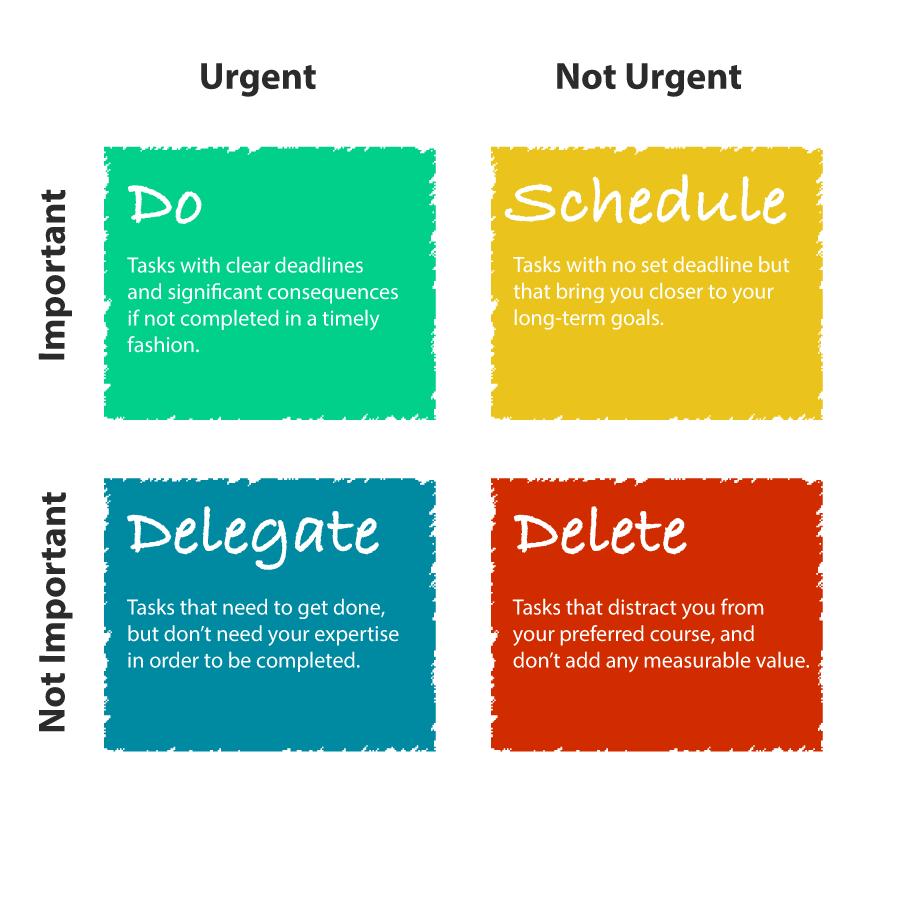I was wondering whether to write this article now or to leave it for later? Fortunately my research prompted further immediate action. Here are 35 tips to stop procrastinating and write productively…
01. Identify and Admit Your Procrastination
The initial step needed for you to begin to eliminate procrastination is to identify and admit that you are, indeed, procrastinating. Drug addicts or alcoholics are most likely to be able to kick their habits if they are able to identify their problems and admit their need to remedy them. Procrastinators need to own up to theirs as well.
02. Improve Your Lifestyle
Far be it for me to preach to you about improving your lifestyle in order to minimise your chances of procrastinating, but the bottom line is that a healthier body encourages a healthier mind. Regulating your sleeping patterns, eating a wholesome breakfast, cutting down on your smoking, going for a walk or a jog – you get the picture – all encourage a better physical state and this WILL improve your mental wellbeing. Procrastination is generally connected to your state of mind.
03. Establish Whether You Struggle With Active or Passive Procrastination
The COO Alliance describes active procrastination as follows:
“Active procrastination is a choice to delay important work in favor of other important work that adds to the overall well-being of a project. This type of procrastination works for your goals rather than against them.”
Aditya Shukla, writing for Cognition Today, describes passive procrastinators as such:
“Passive procrastinators are often crippled by indecision and an inability to self-regulate – that gets in the way of completing a task. For traditional (passive) procrastinators, failing to begin work is further loaded by anxiety which causes additional stress and inaction.”
Identifying the type of procrastination you suffer from enables you to identify what future steps are applicable and necessary for you, in order to move forward in a more productive manner.
04. Establish Why You’re Procrastinating
If you’re able to blame other influences, you’re probably close to identifying the reasons for your assumed inability to get writing productively. Once you know the reasons why your procrastination exists, you’ll be a large step closer to remedying your problem.
05. Accept Responsibility
It’s too easy to blame external influences or events for your procrastination problems. Yes, they may play huge roles but ultimately it is up to you to re-find your productivity, and the blame for being side-tracked and not changing things lies with you, and you alone. You have the power to change matters.
06. Forgive Yourself
A large step to overcoming most problems that you might have caused yourself or others is to be able to forgive yourself for your actions. Besides, procrastination is most commonly caused by external pressures and stress that affect your state of mind in ways that you might not even be acutely aware of. Overcoming the burden of guilt will enable you to move forward instead of dwelling in the past crying over that whole can of milk you’ve spilled.
07. Incentivise Yourself
Come up with a way to reward yourself once you are able to push through and finish a project without further procrastination. Whether it be a new set of golf clubs or a day at the spa, incentivising yourself will discourage procrastination – you’ll want that reward and feel like you’ve earned it!
08. Banish Your Browser Bookmarks and Silence Your Phone
You don’t NEED to check your Facebook profile. The sports news CAN wait. Your broker WILL check your share prices. Leave those bookmarks alone and stop procrastinating. You also really don’t NEED to take that call. You’ve got work to complete today!
09. Identify and Appoint a “Productivity Policeman’
You may have doubts that you can win this battle alone. Take responsibility and think of somebody who’ll be willing and able to check up on you. It may be your BFF or your wife or your boyfriend. Somebody who loves you will want to see you succeed and will do their bit to help you do so. If you take that first step and ask them to.
10. Suggest a Wager
Nobody likes to lose a bet. Make a wager with a co-worker, friend or family member that you’ll complete a project, or even just a certain task, within a stipulated time frame. It’s all about creating additional incentives. If you lose, you’ll still know that you made your best effort.
11. Advertise Your Goals
Tell somebody what you want to achieve and how you’re going to set about doing it. Vocalising a goal, especially to somebody else, will provide an extra incentive to push through and deliver, with less chance of being idle.
12. Concentrate on Today
Forget about tomorrow. Schedule tasks of high importance that need to be completed TODAY and get going. Tomorrow can wait until it’s today to be dealt with.
13. “Want to” Instead of “Need to” or “Have to”
A subtle shift in your thinking enables you to look forward more to your impending project. If you “want to” complete a task it will be a lot more enjoyable than if you “have to”, and the result will probably be a whole lot better too. You may “need to” beat procrastination for the sake of your livelihood, but you’ll be much happier doing so if you “want to” do so.
14. Choose a Motivation Song
Music can be an immediate mood shifter. Selecting specific songs that lift your spirit and drive you to do better is an old but effective way of steering yourself in the right direction. Personally, as a more vintage model, I find that Simon & Garfunkel’s “The Boxer”, Matthew Wilder’s “Break My Stride” and Kristina & The Waves’ “Walking on Sunshine” give me an immediate mood boost. Don’t overplay your songs though – once before starting work will do perfectly.
15. Work in a Pleasant Environment
Create a working environment that is not overly bleak and that is conducive to maintaining your concentration. The more comfortable you are, the better you’ll be able to maintain a constant level of work and motivation without constantly feeling the need to give up or incorporate delaying tactics.
16. Write ‘To Do’ Lists
Make notes about what you aim to accomplish today. List these aims in point form and begin with point one. While working, edit your list where necessary for optimization purposes but don’t move things down the list purely because you don’t feel like doing them. Be strict with yourself and maintain your productivity.
17. Start Your Day with ONE Primary Goal
Select a primary goal that incorporates everything on your daily ‘To Do’ list. Make this the header for your list and ensure that your included items all point towards achieving that goal. Achieving this goal will probably result in a somewhat-euphoric state of mind, so don’t ruin tomorrow by over-celebrating!
18. Take Baby Steps
Don’t expect miracles. Persevering and taking small steps forward will result in favourable conclusions. Be human but stick to the routines you’ve set up to banish your procrastinating.
19. Don’t Overload Yourself
Remember that you’re fighting procrastination. By assigning yourself too many daily tasks you’re just going to drag yourself back into the cesspit. Be realistic with what you believe you can achieve with solid work and focus on that alone. Should you come to the end of your daily ‘To Do’ list and have time to spare, add another item or two afterwards. It is better to be able to experience a sense of accomplishment by getting to the end of your list than feeling like you’re struggling to tread water because you’ve taken on too much. You will find that, as your urge to procrastinate diminishes, you’ll be adding more to your daily list from the outset. And completing everything!
20. Use The Eisenhower Matrix
“I have two kinds of problems: the urgent and the important. The urgent are not important, and the important are never urgent.” – Dwight D. Eisenhower
The Eisenhower Matrix assists in defining which tasks are urgent, important, not urgent and not important. The slab.com image below shows you how to apply the principle in order to assist with your decision-making.
21. Consider Temporal Discounting When Defining Urgent Tasks
Temporal discounting is a phenomenon whereby human beings look at requirements of the present and prioritize them over future requirements. This makes logical sense as we’re living in the present so our current needs often tend to overshadow ‘the bigger picture’.
By incorporating future requirements into your planning, you will gain a more rounded perspective regarding what needs to be done urgently, and how doing it will simplify your work going forward. An earlier point I made advises you to concentrate on today – this is still applicable. Just make sure that what you are doing today is best suited for what you’ll need to do tomorrow. Then forget about tomorrow.
22. Tackle the Tough and Ugly from the Word ‘Go’
Get right into it. After building up your courage to beat putting things off, the best place to start is with the toughest part. Your motivation to overcome is high and you’re really keen to push as hard as possible, so why not start ugly? After successfully vaulting the biggest hurdle everything else should be a breeze.
23. Split up the Good, the Bad and the Ugly
When scheduling, look at what you’ll enjoy doing and what you really want to run away and hide from. Stagger these, beginning with the toughest task but giving yourself breathing space to ease into taking on the other bad guys with a couple of fun tasks between them. You know you’re not over the possibility of further procrastinating yet, so don’t try to take on all the ugly stuff together. Work sensibly, considering your state of mind always.
24. Set Personal Deadlines and Time Yourself
On the first and second days of your newly-found ‘productivity drive’, set personal deadlines and time how long it takes for you to complete tasks. Estimate how long a certain task should take before starting, set your deadline and see how accurate your estimation was on completion. Don’t beat yourself up if you’re slower than anticipated though.
By timing how long you’re taking on specific tasks and attempting to stick to a deadline, you are educating yourself for future tasks and instilling the opportunity for future feelings of achievement. Your completion times for certain types of tasks will improve as your tendency to procrastinate diminishes. You will make your deadlines, be aware of your improvements and start to feel great. Look forward to that feeling!
25. Don’t Expect Perfection!
You’ve been going through a rough time. It is never easy beating procrastination and you need to allow yourself time to find your productive feet again. I’ll remind you again – don’t expect that you’re going to move from zero to absolute hero immediately. Temper your own expectations because failing to meet over-zealous standards will only thrust you straight back into the mire from whence you came. Be gentle and build up to hero status slowly.
26. Start Immediately
Get your caffeine boost or satisfy your nicotine craving prior to sitting down to work, not in-between. With your ‘To Do’ list at the ready, start writing. Once your bum hits your seat, focus on the task at hand and get busy.
27. Forget About Multitasking
That’s easy for me to say, isn’t it? Depending on your job, it is sometimes hard not to multitask. This is understandable. My point is, that if you can get away with not multitasking, you will find it much easier to get involved in the root cause of your procrastination and have a better chance of beating it. Just try not to multitask. Deal?
28. Make Use of Technology
Do what you can to simplify how you do things. For example, writing your copy or content with the aid of an AI content generator, like ContentBot, can help you to transition from a procrastinator to a productive writer in no time at all. AI content generators are designed with features to simplify the writing process and save the user time and needless frustration.
29. Work in 5 Minute Segments
Some advisors prescribe working in accordance with the “two minute rule”, meaning that you should work in two minute segments before reassessing how you’re doing. My opinion is that this is too short. You want to achieve while you’re beating your procrastination and by reassessing your progress every two minutes, you may not be allowing yourself to gain enough momentum to push through without an excuse to begin focusing on something different.
My suggestion is that you work in five minute segments, reassess and then decide on when you’re ready to extend these to longer segments. You need to be your own judge with regards to what is working for you. If you believe that you’re really only capable of two minute segments to start with, then go for that. There really isn’t any standard formula – just be comfortable.
30. Persevere and Push Through It
A lack of perseverance seems to be a key factor in extended procrastination. Studies conducted by Siegfried Dewitte and Henri C. Schouwenburg on 147 college freshmen shows that “procrastination was closely related to a lack of perseverance, that is, the inability to complete projects.”. The studies also revealed that “procrastinators postponed more of their intentions, mainly because of fun alternatives, but did not intend to study less or later. On the contrary, they even seemed to compensate for their vulnerability by formulating more intentions earlier. Procrastinators emerged as highly motivated students who lack the ability to ward off temptations and distractions during their studying activities.”
These studies prove that procrastination does not only exist in the realm of the lazy and uninspired, and that external factors that appear more appealing often cause motivated individuals to procrastinate as well. Persevering with your necessary tasks in favour of giving up to “enjoy life” more is the solution. With this perseverance, greater enjoyment from the project will be gained.
31. Take Breaks
Throughout your efforts to stay focused, remember to take breaks. It is no use applying pressure on yourself to beat procrastination if you’re going to make yourself wary and lose your creativity and inspiration through concentrating for too long. Take a break to recharge your batteries and keep your focus. This is not procrastinating!
32. Cross Off the Days in a Bright Colour
Keep your motivation levels up by crossing off productive days on a calendar or in a diary. With every big, brightly-coloured cross you see, your confidence will grow and you’ll approach each working day with renewed vigour.
33. Absorb and Appreciate Positive Feedback
This will come. As you find your feet and a decent productivity level once more, the praise and kudos will start coming back. Appreciate them and pat yourself on the back every now and then. You alone know what you’ve gone through and how hard you are working to release the chains of the procrastination that have bound you. Be proud that you’re almost back.
34. Set Up a ‘Power Hour’
Once you’ve managed to extend your concentration segments and your days are feeling shorter and more productive, you’ll feel confident that your levels of perseverance will allow for setting up a ‘power hour’. This is when you focus non-stop for an hour-long stretch. You are aware of when your most productive time is during the day, so use this time to really dig yourself in and make that productivity count. Once you’re able to safely navigate this hour without too much side-tracking, you can really start feeling confident that you’re banishing your procrastinating tendencies to history. Don’t rush this step though – feel confident first!
35. Try the Ivy Lee Method
Ivy Lee was a productivity consultant back in the early 1900s. He devised a method designed to assist with achieving peak productivity in business. His suggestion was that, every evening, his clients were to write down six tasks to complete the next day. They were to list these in order of importance, from most important to least important.
The next day, on their arrival at work, his clients were to concentrate solely on the first task listed until it was completed. They were to move down their lists during the course of the working day, only moving to the next task once they had completed the ones listed above it. If the day ended prior to their completion of their lists, the clients were to add new tasks underneath the incomplete ones to bring the total number of tasks back up to six. These additions were to be repeated every evening after a working day. This simple method prioritizes tasks and enables single-task focus and completion. If you’re ready to try the Ivy Lee Method, it means that you are ready to start thinking about tomorrow too, as opposed to only today. A big step in the right direction.

Conclusion
Procrastination creeps up on a person when you least expect it. The pressures and stresses you experience in everyday life often define how well you are able to function while writing. There is no shame in being a procrastinator unless you’re purposefully shirking your responsibilities.
External influences are the major cause of procrastination, but it is up to you to change your own state of mind to combat this. I trust that these 35 tips to stop procrastinating and write productively can help you to rediscover your productive self in some way. Good luck.
With thanks to Ellen Hendrikson, Ph.d. & Psychology Today for certain included links & information.
- Technology and the future of books - July 29, 2021
- The benefits and importance of UX writing - July 29, 2021
- Use the science of music as a tool to enhance creative productivity - July 28, 2021







1 thought on “35 Tips to Stop Procrastinating and Write Productively”